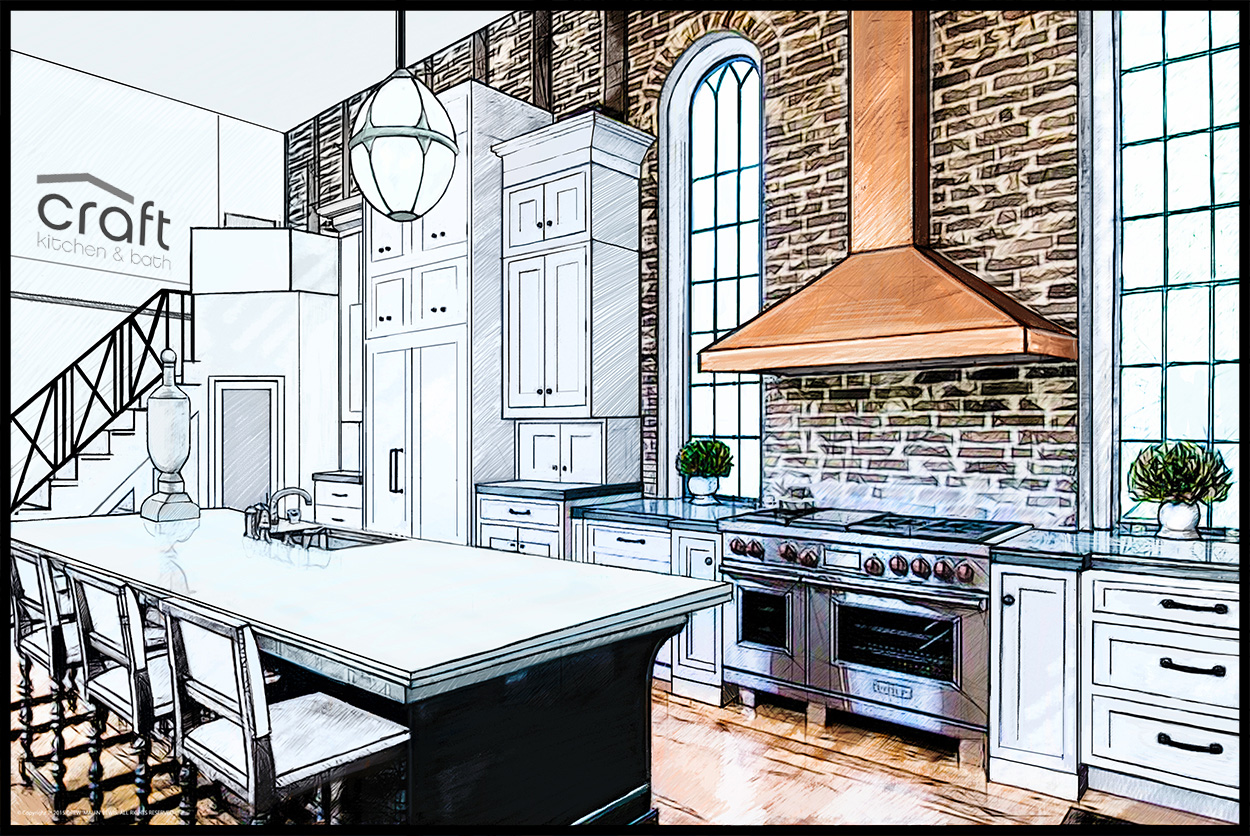When it comes to Kitchen Planning and Drawing, it's essential to create designs that maximize both the functionality and aesthetics of the space. Effective kitchen planning involves strategic layout, flow, and proper use of space, while accurate drawings help bring the vision to life. Below is an overview of what you might include when discussing kitchen planning and drawing.
1. Kitchen Planning Overview
What is Kitchen Planning?
Kitchen planning refers to the process of designing a kitchen layout that optimizes space, enhances functionality, and suits the lifestyle of the homeowner. This stage involves considering factors such as the flow of movement, work zones, storage needs, and appliance placement.
Why is Kitchen Planning Important?
- Efficiency: A well-planned kitchen reduces the time and effort spent on daily tasks like cooking and cleaning.
- Space Utilization: Effective planning ensures that even small kitchens can maximize their storage and counter space.
- Style & Functionality Balance: The planning process helps to incorporate both practical elements (e.g., enough counter space) and aesthetic elements (e.g., color schemes, materials) in a harmonious way.
2. Kitchen Layouts
There are several common layouts, each with unique advantages. When planning, the layout should complement the space available and the user’s cooking and entertaining habits. Here are the most popular layouts:
a. The Work Triangle Concept:
The kitchen work triangle is a principle that optimizes kitchen efficiency by strategically positioning the three most important areas: the stove, sink, and refrigerator. The triangle should ideally create a flow that reduces unnecessary movement.
b. Common Kitchen Layouts:
-
L-Shaped Kitchen:
Ideal for smaller to medium-sized spaces, this layout uses two walls to create a "L" shape. It allows for open floor space and is great for entertaining. -
U-Shaped Kitchen:
Features cabinets along three walls, creating a "U." This layout offers a lot of counter space and storage, making it ideal for larger kitchens and multiple users. -
Galley Kitchen:
A narrow, hallway-style layout with cabinets and countertops on opposite walls. This is often used in smaller homes or apartments where maximizing space is essential. -
Island Kitchen:
A versatile layout that places an island in the middle of the kitchen. The island can serve multiple functions, such as a prep area, eating space, or additional storage. -
Open-Plan Kitchen:
Connected to other living spaces (e.g., living room or dining room), an open-plan layout often uses an island or bar area to separate spaces without fully closing them off. -
Peninsula Kitchen:
Similar to an island layout, but the peninsula layout is connected to the rest of the kitchen with one side attached to a wall or counter.
3. Kitchen Zones
a. The Five Key Kitchen Zones:
A kitchen should be divided into specific functional zones to create an efficient cooking space. The five main kitchen zones are:
- Cooking Zone: The area for your stove, oven, and microwave.
- Cleaning Zone: The sink, dishwasher, and trash bin.
- Storage Zone: Cabinets and pantry for dry goods, utensils, and cooking supplies.
- Preparation Zone: Counter space for food prep and cutting.
- Eating Zone: Space for informal dining, like a breakfast nook or island bar.
4. Kitchen Drawings & Floor Plans
a. Types of Drawings You’ll Need:
-
2D Floor Plan:
A top-down view of your kitchen layout that shows where everything will be placed (appliances, cabinets, sinks, etc.). This helps you visualize the flow of the space. -
3D Renderings:
These provide a more realistic view of how the kitchen will look once built, helping clients to understand dimensions, materials, and how the layout will function. -
Elevation Drawings:
Vertical views of the kitchen (usually for walls or cabinetry) to show how the design looks from the front, side, or top. -
Electrical & Plumbing Plans:
These are essential if you're doing a renovation. They show the location of power outlets, lighting fixtures, and plumbing lines for sinks and dishwashers.
b. Tips for Creating Accurate Kitchen Drawings:
-
Accurate Measurements:
Ensure the kitchen space is measured precisely to ensure everything fits and works together. This includes wall lengths, door and window sizes, and ceiling heights. -
Appliance Specifications:
Consider appliance dimensions and plan for enough space around each one for easy use and cleaning. -
Traffic Flow:
Leave enough space between countertops, appliances, and islands for comfortable movement, ideally 42–48 inches of walking space between counters and cabinets. -
Functionality & Aesthetics:
While planning and drawing, be mindful not just of how things fit together, but also how they will function in daily use. Ensure there’s enough storage and that surfaces are easy to maintain.
5. Essential Kitchen Design Elements
a. Cabinetry Design:
- Custom vs. Stock Cabinets:
Custom cabinetry allows for a more personalized, space-efficient design, while stock cabinets are budget-friendly and widely available. - Cabinet Types:
Consider drawer storage, pull-out pantry units, or open shelving in areas that need more accessibility.
b. Countertops:
- Material Selection:
Granite, quartz, marble, wood, and laminate are all options. Each has different aesthetic qualities, durability, and maintenance requirements.
c. Lighting:
- Task Lighting:
Focused lighting for food prep areas, cooking spaces, and the sink. - Ambient Lighting:
General lighting for the entire space, usually overhead. - Accent Lighting:
Used to highlight features like cabinetry, countertops, or artwork.
d. Flooring:
- Materials:
Choose from hardwood, tile, laminate, or vinyl flooring, depending on budget and desired style. - Durability:
Kitchens are high-traffic areas, so ensure your chosen flooring material can withstand spills and heavy use.
6. How to Draw a Kitchen Layout (Step-by-Step)
-
Start with a Base Plan:
Draw the outline of your kitchen space, including walls, doors, windows, and existing plumbing/electrical. -
Mark Work Zones:
Divide the kitchen into work zones (cooking, cleaning, storage, etc.) based on the work triangle or workflow. -
Place Large Appliances:
Position the stove, refrigerator, and sink first, ensuring the work triangle is efficient. -
Add Cabinets & Storage:
Place cabinets, pantry units, and drawers to maximize storage space, keeping accessibility in mind. -
Include Counter Space:
Make sure there is adequate counter space near the sink and stove for food prep. -
Ensure Proper Spacing:
Leave enough room for appliances to open fully, and ensure there's enough walking space between fixtures. -
Review for Functionality:
Step back and assess if the kitchen will function well for daily use—will the space flow smoothly for cooking, cleaning, and entertaining?
7. Software & Tools for Kitchen Drawing:
If you’re a professional or DIYer looking to create digital plans, here are some tools you can use:
- SketchUp: A 3D modeling software that allows for detailed kitchen layouts and renderings.
- AutoCAD: Industry-standard software for professional designers, ideal for creating precise and detailed drawings.
- Home Designer Suite: User-friendly software for DIY home design and remodeling.
- IKEA Home Planner: A free tool for designing kitchen layouts using IKEA products.


